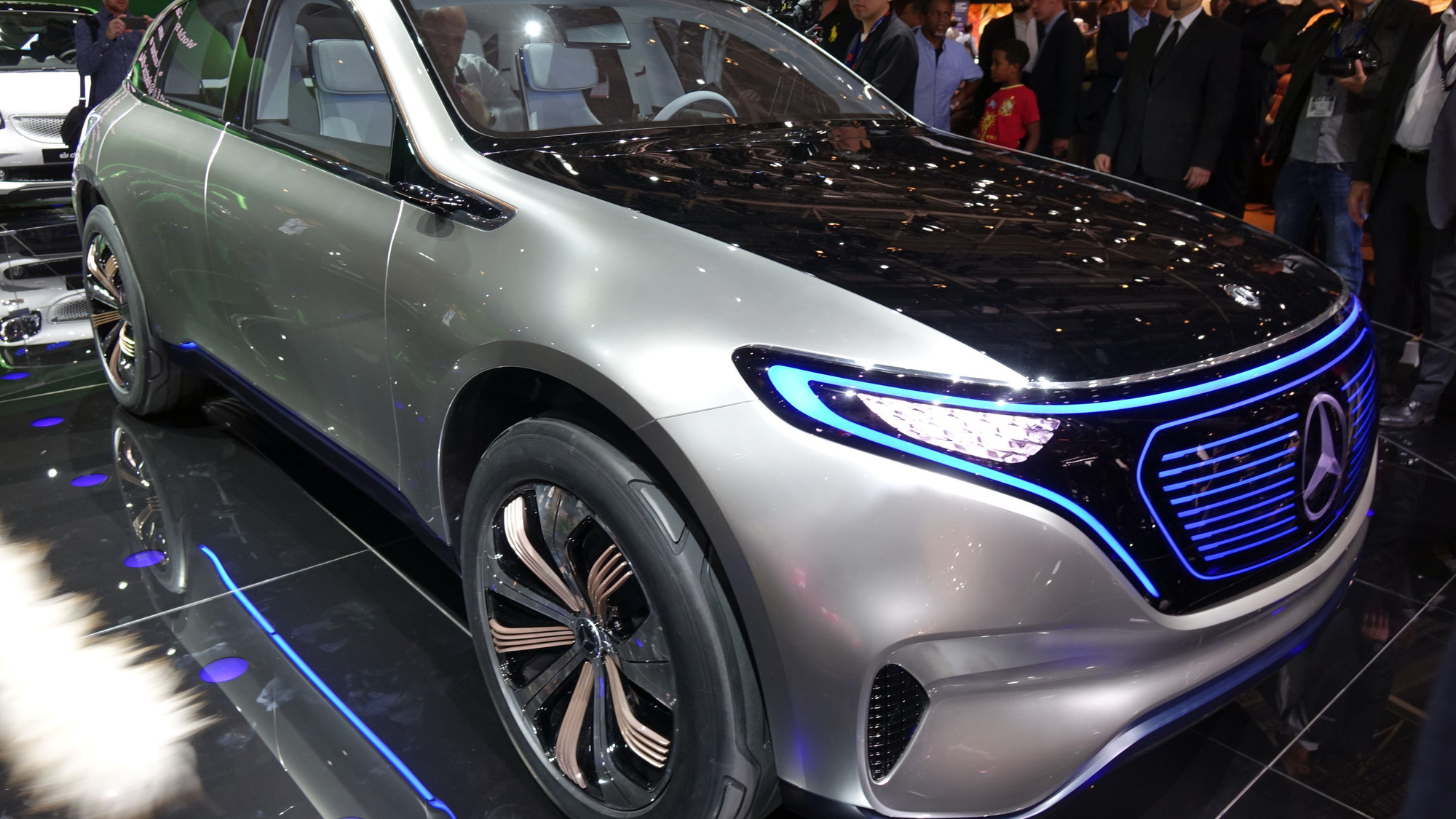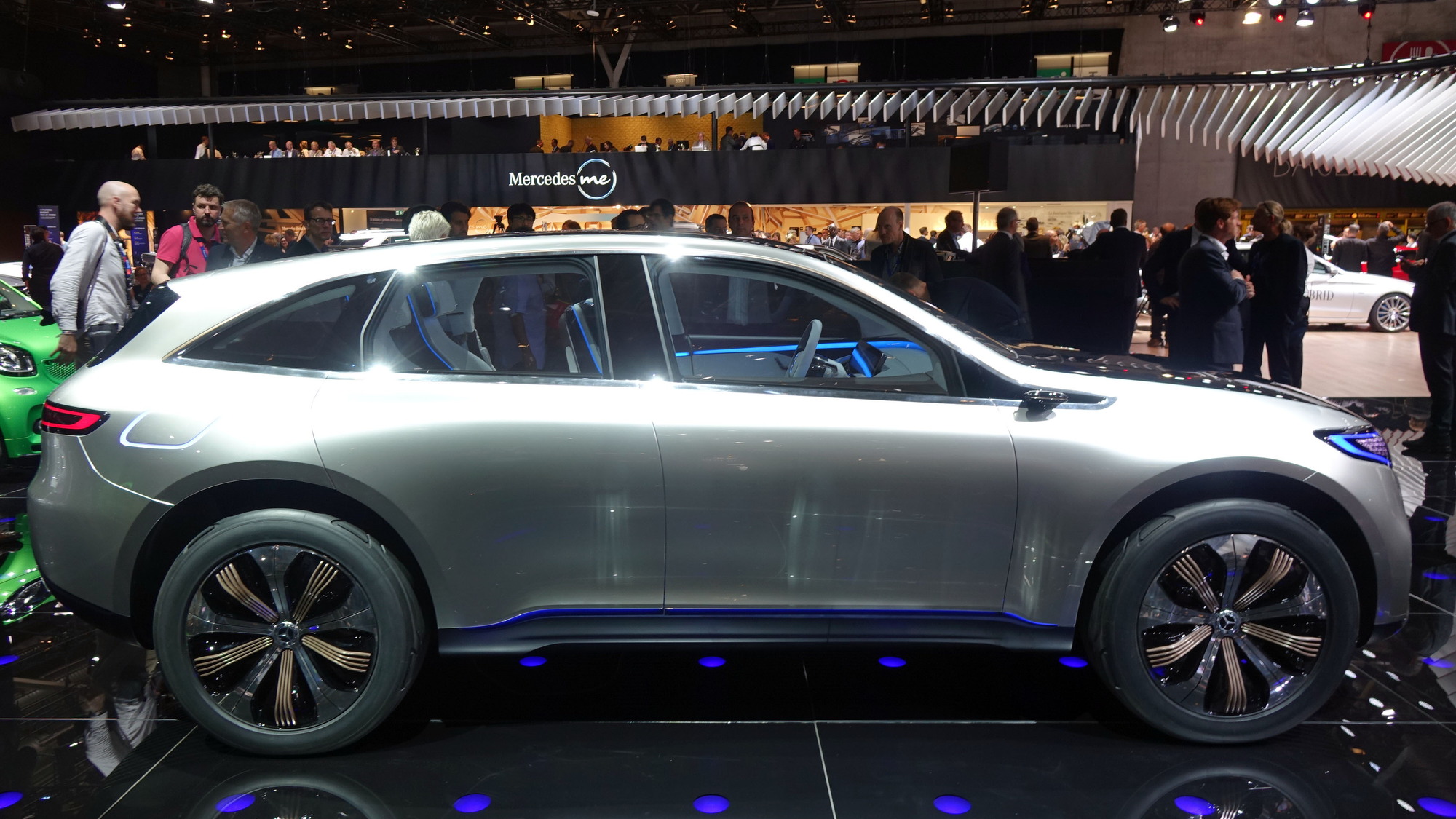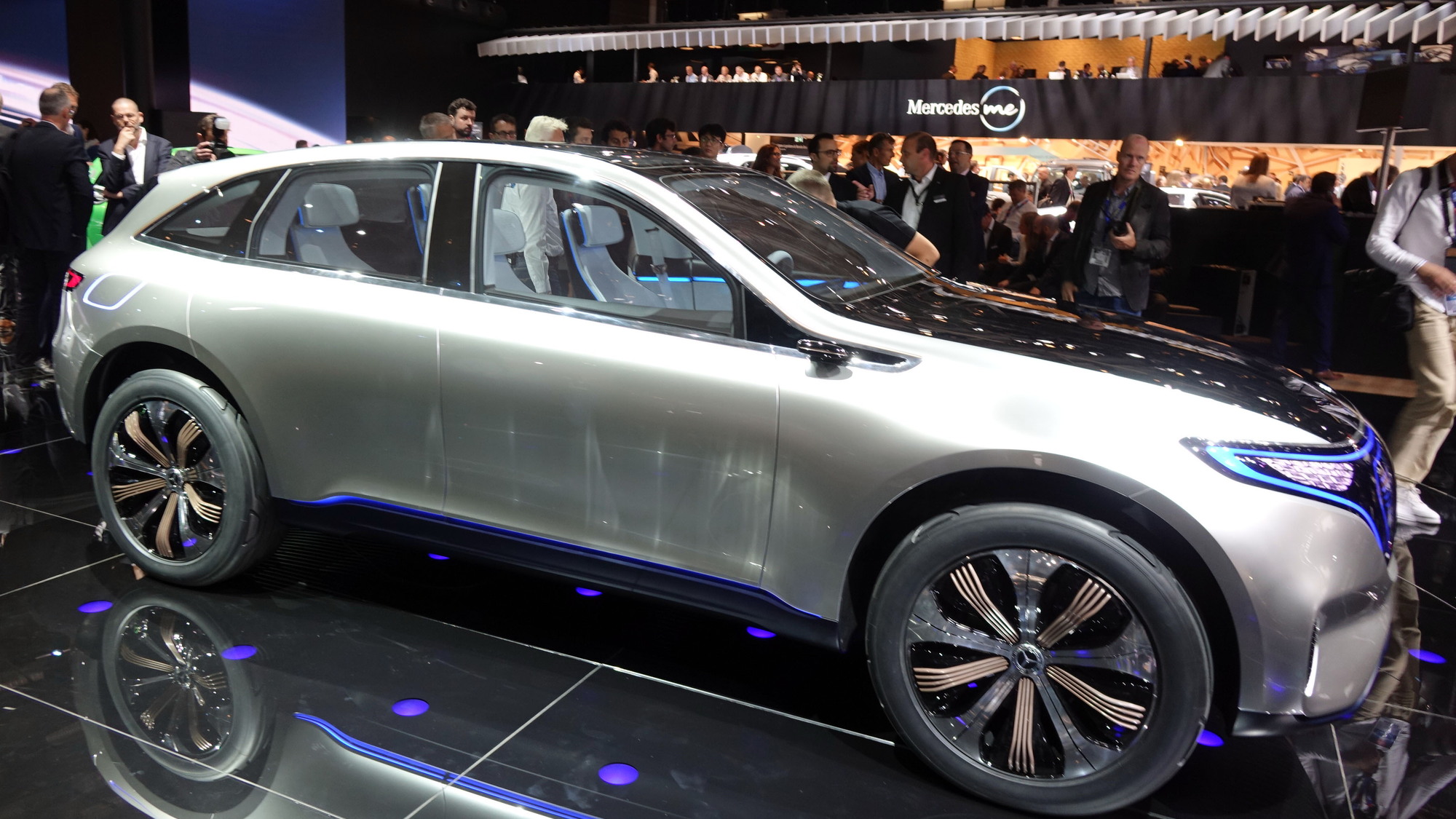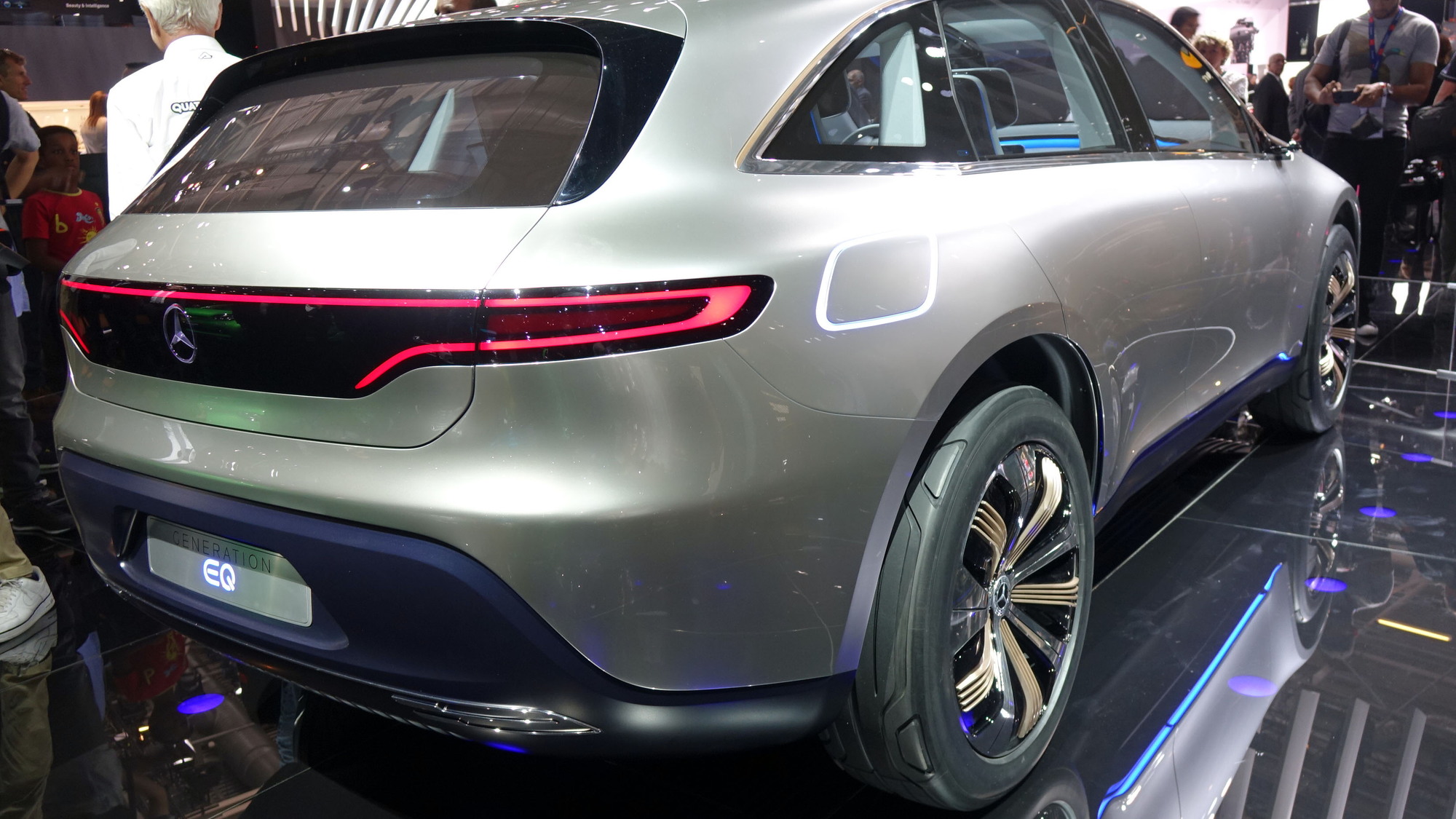Mercedes-Benz’s much-hyped electric car concept has finally made its 2016 Paris auto show debut.
Like Volkswagen’s own I.D. concept on display in Paris, the star of Mercedes’ stand previews the first of the automaker’s next-generation electric cars.
The concept is called the Generation EQ, and as previously reported the “EQ” in the name is the badging that Mercedes will use to denote its future electric cars. It apparently stands for “Electric Intelligence.” Individual models are expected to be called EQC or EQS, with the last letter denoting the car’s positioning in the Mercedes model hierarchy.
Mercedes, of course, is not new to the electric game. It was an early investor of Tesla [NSDQ:TSLA] and has been offering electric cars for several years, though these have been niche products limited to a handful of markets. The list includes the Electric Drive versions of the Smart ForTwo, B-Class and SLS AMG.
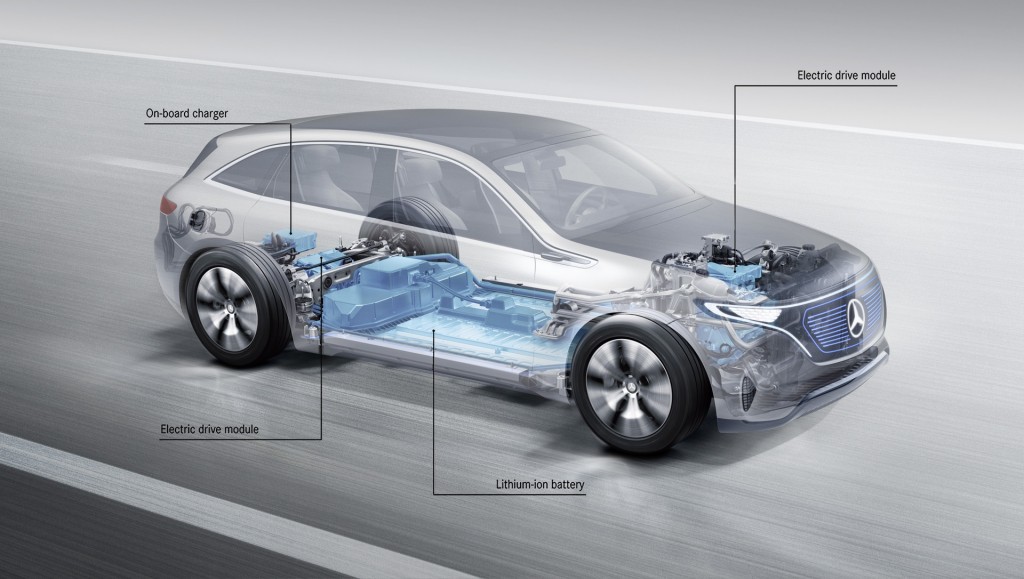
Mercedes-Benz Generation EQ concept, 2016 Paris auto show
With Tesla taking electric cars mainstream, every automaker worth its salt is racing to offer rival products. The production version of the Generation EQ will be launched before the end of the decade to take on not only the Tesla Model X but also Audi’s planned Q6 e-tron. (We're hearing in 2018 or 2019.) It will then be followed by a handful of electric Mercedes models, all based on a modular “skateboard” platform where the batteries are stored in the floor and an electric motor is mounted at one or both axles. Mercedes previewed the platform at a tech briefing in June.
In the Generation EQ, there are two electric motors delivering a combined output of approximately 400 horsepower. They form a “through-the-road” all-wheel-drive system and should offer brisk performance, especially thanks to the more than 516 pound-feet of torque. Mercedes quotes a 0-60 mph time of less than 5.0 seconds.
Powering those motors is a lithium-ion battery sourced from Deutsche Accumotive, a battery company owned by Mercedes’ parent company Daimler. Deutsche Accumotive already has a battery factory up and running and is extending this in preparation for Mercedes’ next-generation electric cars. Mercedes says the production version of the Generation EQ will have more than 70 kilowatt-hours and range of at least 300 miles on a single charge.
Charging can be done via a high-speed “wallbox” installed in the garage or using wireless inductive charging. The latter will debut on the 2018 Mercedes-Benz S550e plug-in hybrid. Currently, charging capacities from 50 to 150 kilowatts are possible. In the medium to long term, a charging capacity of even up to 300 kw is planned. (Known as Combined Charging System, or CCS for short.) With the latter, you could add around 60 miles of range in 5 minutes.

Mercedes-Benz Generation EQ concept, 2016 Paris auto show
It’s not just the technology of Mercedes’ next-generation electric cars being previewed here. So is the exterior and interior concepts. For the exterior, Mercedes design boss Gorden Wagener says the goal was to combine the elegant lines of typical Mercedes design with a distinctive, modern look that suggests electric power. Wagener referred to this as an “electro-look.”
This was done by streamlining the body—you’ll notice there’s no grille, side mirrors or door handles—and adding numerous LED detailing. Meanwhile, an intentionally reduced side view, broad shoulders and large 21-inch wheels give a dynamic look.
Inside, the designers wanted a driver-oriented cockpit with simple, touch-based controls with the same electro-look as the exterior. Dominating the dash is a floating wide-screen display that provides vital driving information as well as serving as the main hub for the infotainment system. The rest of the cabin resembles a classy lounge and includes additional screens to keep occupants entertained.
It goes without saying that the Generation EQ concept also features the latest driving aids from Mercedes, which rely on highly accurate maps from HERE. For example, the systems know such things as the precise position and radius of a roundabout. Mercedes’ upcoming electric cars won’t be able to drive completely on their own but in some situations should have self-driving capability, such as on the highway or in heavy traffic.

Mercedes-Benz Generation EQ concept, 2016 Paris auto show
The Generation EQ has the ability to display the highly accurate maps.This makes it possible, for example when searching for points of interest, for restaurants, shopping opportunities and tourist attractions to be especially highlighted. So that the driver isn’t overloaded, only those buildings and information that are relevant for navigation are displayed.
The concept also integrates vehicle-to-vehicle (V2V) and vehicle-to-infrastructure (V2X) technology. The latter is particularly important as it is helpful for the driver to be informed about nearby recharging opportunities. As soon as the vehicle determines that the destination cannot be reached on the available battery charge, it advises the driver of appropriate options on the navigation map.
Germany’s automakers are rushing to launch new electric cars due to the improvements made to battery technology in recent years as well as more generous incentive programs, particularly in China. The Volkswagen Group wants 30 electric cars in its lineup by 2025. Many of these will be Audis, with the brand with the four rings targeting as much as 25 percent of its sales to be electric cars by that date.
For more from the Paris auto show, head to our dedicated hub.
